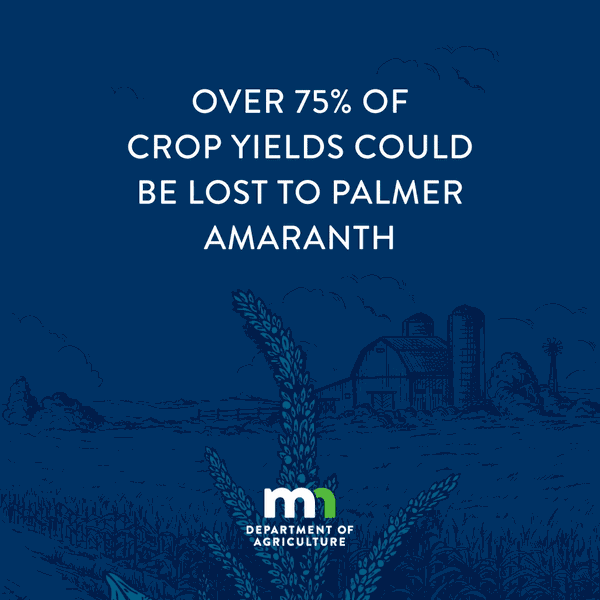
Palmer amaranth is a fast-growing noxious weed. It has developed resistance to multiple classes of herbicides making it difficult and expensive to control. Learn more and get ready.
- With each planting season, Palmer amaranth increases in infested fields.
- It spreads like wildfire and reduces crop yields.
- It competes with your crops and reduces your bottom line.
Learn how to stop Palmer amaranth.
- Palmer amaranth is a fast growing weed native to the southwestern United States and northwestern Mexico, and has spread east and north. It has developed resistance to multiple classes of herbicides and their different modes of action, making it very difficult and expensive to control. Palmer amaranth is a prolific seed producer. Up to 500,000 seeds can come from one plant. It is also highly competitive.
- In September 2016, Palmer amaranth, Amaranthus palmeri, was found in Minnesota. To date, it has been documented in the counties on the linked map. The Minnesota Department of Agriculture (MDA), University of Minnesota Extension, U.S. Department of Agriculture (USDA), landowners and other partners are working to eradicate these infestations before they can spread to new areas.
- Palmer amaranth is listed as a Prohibited Noxious Weed on the Eradicate List and as a Prohibited Noxious Weed Seed in Minnesota.
- Be proactive and prevent Palmer amaranth establishment. Familiarize yourself with Palmer amaranth identification and actively look for it in crop fields, borders, ditches, conservation lands and around dairies. Contact MDA's Weed Team, U of M Extension Crops Educator, or your crop consultant to learn more about identifying Palmer amaranth.
- If you suspect you have Palmer amaranth, report it!

